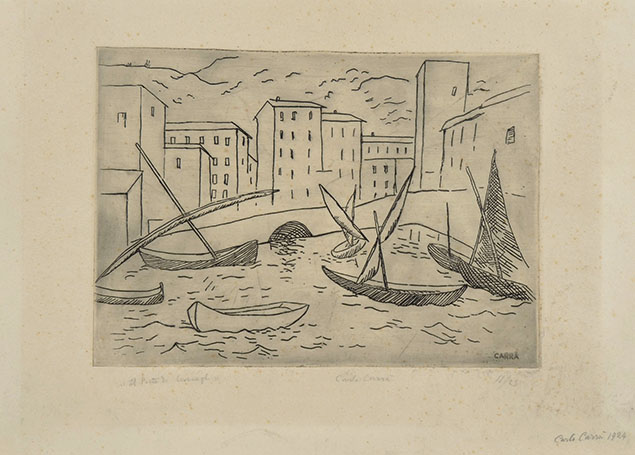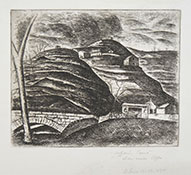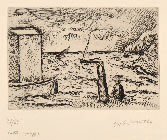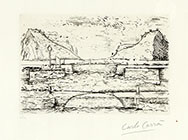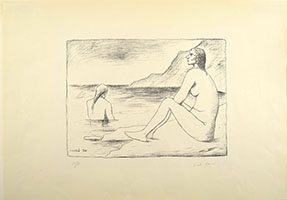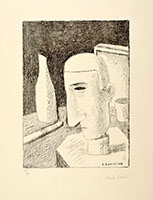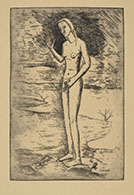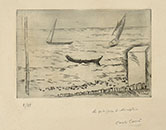(Quargnento, Alessandria 1881 - Milan 1966)
IL PORTO DI CAMOGLI (ALSO KNOWN AS BARCHE IN PORTO AND VELE AL CHIUSO), 1923
Etching, 1923; a fine impression, printed in black ink with much surface tone, on thick wove.
From the edition of 25 printed in 1924, titled, signed, numbered, signed again and dated, in pencil on the bottom margin "Il Porto di Camogli" Carlo Carrà 11/25 / Carlo Carrà 1924.
Another edition of ten was pulled in 1951. With large margins, lightly toned, otherwise in very good condition. To the platemark 219 x 308 mm. See M. Carrà, Carlo Carrà. Opera Grafica, Venice, 1976; cat. no. 12.
Carrà was born to a family of artisans. After working as a mural decorator for about ten years in the cities of Valenza Po, Milan, Paris, London and Bellinzona, in 1906 he enrolled at the Brera Art Academy. In 1908 Carrà became friend with Boccioni and Russolo. The three artists met Marinetti in 1910, and together published the Manifesto dei pittori futuristi. Carrà's Futurist phase ended around the time World War I began. His work, while still using some Futurist concepts, began to deal more clearly with form and stillness, rather than motion and feeling. Carrà soon began creating still lifes in a style he, along with Giorgio de Chirico, called metaphysical painting. In 1933 Carrà was a signatory with Sironi, Campigli and Achille Funi to the Manifesto della pittura murale. He became Professor of Painting at the Brera Art Academy in 1941. Carrà took up etching in 1922 and in the same year he made his first lithograph for the Bauhaus portfolio of prints by Italian and Russian artists. He made forty-five etchings in the years from 1922 to 1924 and a further five lithographs and an aquatint in 1927 and 1928. He returned to printmaking only in 1944, when twenty-two lithographs were published in the portfolio Segreti.
